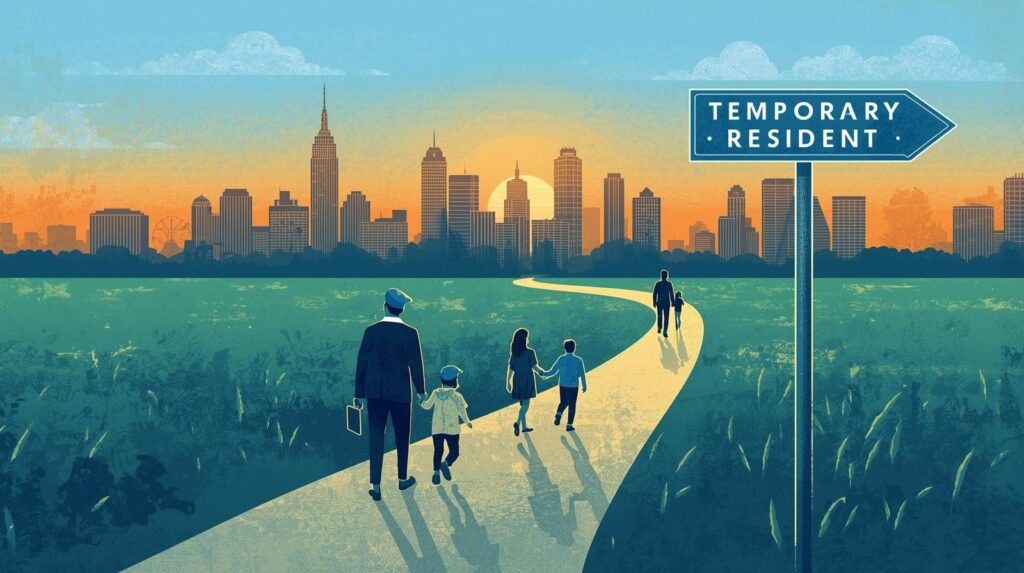Transitioning from a Temporary Resident (TR) to a Permanent Resident (PR) is one of the most important journeys for individuals who wish to build a long-term future in a new country. Whether you are in Canada, Australia, or another immigration-friendly nation, the TR to PR pathway offers skilled workers, international students, and temporary visa holders a chance to secure permanent residency.
This guide explores the TR to PR pathway in detail—covering eligibility, step-by-step processes, benefits, requirements, and strategies to maximize your chances of success. If you’re currently a TR looking to transition to PR, this article will help you understand everything you need.
Read Also: Canada PR Card Renewal Guide 2025 | Eligibility, Process & Fees
What is the TR to PR Pathway?
The TR to PR pathway is an immigration process that allows individuals holding a Temporary Resident (TR) status—such as international students, temporary workers, or visitors—to apply for Permanent Residency (PR).
In most cases, governments introduce this pathway to:
- Retain skilled talent
- Address labor shortages
- Provide stability for students and workers already living in the country
- Support long-term economic and cultural growth
For example, in Canada, the government launched a TR to PR pathway program in 2021 to allow over 90,000 essential workers and international graduates to apply for PR. Similar frameworks exist in Australia, New Zealand, and the UK.
Benefits of Moving from TR to PR
Securing PR status unlocks several advantages that temporary status cannot provide:
- Long-term stability – You no longer need to worry about visa expiration.
- Work flexibility – PR holders can work for any employer without restrictions.
- Access to benefits – Healthcare, education, and social benefits become available.
- Pathway to citizenship – PR is often the last step before naturalization.
- Family sponsorship – PR holders can sponsor eligible family members to join them.
Who Can Apply for the TR to PR Pathway?
Eligibility depends on the country and the specific immigration stream. Generally, the following groups are eligible:
1. International Students
- Must have completed an eligible diploma, degree, or trade program.
- Often required to have studied at a recognized institution.
- Post-graduate work experience may be needed in some programs.
2. Skilled Workers
- Temporary foreign workers in essential industries such as healthcare, construction, or technology.
- Applicants with valid work permits and relevant job experience.
3. Essential Workers
- Healthcare professionals (nurses, caregivers, doctors).
- Frontline workers in food supply, logistics, and manufacturing.
4. Other Categories (Country-Specific)
- Refugees or asylum seekers (special programs).
- Spouses/partners of PR holders.
- Rural or regional program applicants.
Step-by-Step Process: How to Transition from TR to PR
The process varies by country, but the steps generally follow this pathway:
Step 1: Check Eligibility
- Verify if your TR status qualifies under the available PR streams.
- Review government immigration websites for requirements (e.g., Government of Canada Immigration).
Step 2: Gather Documents
Commonly required documents include:
- Valid TR permit (work, study, or visitor visa)
- Proof of employment or education
- Language test results (IELTS, CELPIP, etc.)
- Medical exam and police clearance
- Identity documents (passport, birth certificate)
Step 3: Submit Application
- Apply through the official immigration portal of the country.
- Some pathways operate on a quota basis, so apply early.
Step 4: Wait for Processing
- Processing times may range from 6 to 18 months depending on demand.
- Some countries offer fast-track options for in-demand occupations.
Step 5: Receive PR Confirmation
- Once approved, you will receive a Confirmation of Permanent Residence (COPR) or equivalent.
- You may then apply for a PR card or residency permit.
TR to PR Pathway: Country Comparisons
| Country | Eligible Groups | Processing Time | Special Notes |
|---|---|---|---|
| Canada | International graduates, essential workers, French speakers | 6–12 months | TR to PR Pathway 2021 program accepted 90,000 applicants |
| Australia | Skilled workers, students, regional applicants | 12–18 months | Points-based PR system |
| New Zealand | Essential workers, students | 6–12 months | “Green List” fast-track occupations |
| UK | Skilled workers, dependents | 12 months+ | Must meet salary thresholds |
Key Challenges in the TR to PR Pathway
While attractive, the pathway comes with challenges:
- Limited quotas – Many programs operate on a first-come, first-served basis.
- Complex documentation – Missing papers can delay applications.
- Language requirements – Standardized testing adds difficulty.
- Policy changes – Immigration rules evolve regularly, impacting eligibility.
Tips for a Successful TR to PR Application
- Apply early – Quotas fill quickly.
- Stay updated – Monitor official government websites.
- Work in high-demand fields – Healthcare and trades often have priority.
- Prepare documents in advance – Avoid last-minute issues.
- Seek professional help – Immigration consultants can guide your case.
FAQs About the TR to PR Pathway
1. How long does it take to transition from TR to PR?
Processing times vary by country and program but typically range from 6 months to 18 months. Fast-track options may be available for in-demand occupations.
2. Can international students apply directly for PR after graduation?
Not always. Most countries require post-graduation work experience before eligibility. However, some specialized programs allow immediate applications for top graduates.
3. Is the TR to PR pathway permanent or temporary?
Some TR to PR programs are temporary policy measures (like Canada’s 2021 stream), while others are ongoing immigration categories (such as skilled migration in Australia).
Conclusion
The TR to PR pathway is a critical opportunity for temporary residents seeking long-term settlement, better work opportunities, and stability. Whether you are an international student, skilled worker, or essential worker, understanding the eligibility, requirements, and strategies will help you navigate the process successfully.
If you are considering this pathway, start early, stay informed, and prepare your documents well in advance. The TR to PR pathway not only secures your future but also opens doors for your family and career.



